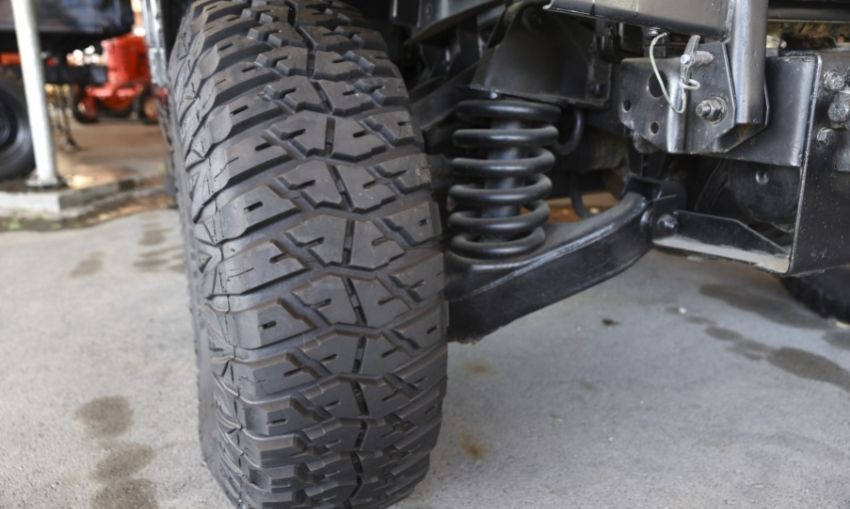Regular maintenance and prompt repairs prevent common car suspension and steering issues. Ignoring these problems leads to costly damage.
Maintaining a vehicle’s suspension and steering system is crucial for safe and smooth driving. Regular checks help identify potential problems early. Addressing issues promptly ensures the longevity of your car’s components. Drivers should pay attention to unusual noises, vibrations, or handling difficulties.
These signs often indicate underlying problems that need immediate attention. Regularly inspecting tire alignment and suspension parts helps avoid costly repairs. Keeping the steering system in top condition enhances vehicle control and safety. Investing time in proper maintenance saves money and ensures a comfortable driving experience. By following these practices, drivers can prevent common suspension and steering issues effectively.
Introduction To Car Suspension And Steering
Understanding your car’s suspension and steering is vital. These systems ensure a smooth, safe ride. They work together to absorb shocks and allow precise control.
Importance Of Maintenance
Regular maintenance of your car’s suspension and steering is essential. It prolongs the life of your vehicle. Routine checks can prevent costly repairs.
Here are some key maintenance tasks:
- Inspecting and replacing worn-out parts.
- Checking fluid levels and top them up.
- Aligning the wheels to prevent uneven tire wear.
- Testing the shock absorbers for proper function.
Common Problems
Various issues can arise with suspension and steering. Identifying them early can save you trouble.
| Problem | Symptoms | Solution |
|---|---|---|
| Worn-out shocks | Car bounces excessively | Replace shock absorbers |
| Misaligned wheels | Uneven tire wear | Get a wheel alignment |
| Leaking power steering fluid | Hard to steer | Fix the leak, refill fluid |
Keeping an eye on these issues can enhance your driving experience. It also ensures your safety on the road.

Credit: autoservicefairfax.com
Identifying Suspension Issues
Car suspension issues can lead to bumpy rides and costly repairs. Recognizing these problems early helps maintain a smooth driving experience. This guide will help you identify common suspension issues.
Signs Of Wear And Tear
Over time, suspension parts can wear out. Common signs include uneven tire wear, leaking shocks, and sagging on one side. Check for these signs regularly to avoid bigger problems.
| Symptom | Possible Issue |
|---|---|
| Uneven Tire Wear | Misaligned Wheels |
| Leaking Shocks | Damaged Shocks |
| Sagging on One Side | Broken Spring |
Symptoms To Watch For
Pay attention to how your car feels while driving. Common symptoms of suspension issues include:
- Rough Ride: Feeling every bump on the road.
- Drifting: Car pulls to one side.
- Nose Dives: Car dips forward when braking.
- Oily Shocks: Visible oil on suspension parts.
If you notice any of these symptoms, it’s time for a check-up. Regular maintenance can prevent these issues from becoming severe.
Common Steering Problems
Steering problems can cause unsafe driving conditions. They affect vehicle control and safety. Identifying these issues early can save money and prevent accidents. Below, we highlight two common steering problems.
Steering Wheel Vibration
Steering wheel vibration is a sign of steering issues. This can be caused by:
- Unbalanced tires
- Worn-out suspension components
- Alignment issues
Unbalanced tires often cause vibration at higher speeds. Worn-out suspension parts can lead to uneven tire wear. Alignment issues make the vehicle pull to one side.
Regular maintenance and tire balancing can prevent these problems. Always address vibrations immediately.
Difficulty Turning
Difficulty turning the steering wheel can be dangerous. This issue can stem from:
- Low power steering fluid
- Faulty power steering pump
- Worn-out steering gear
Low power steering fluid makes turning harder. A faulty pump can fail to assist steering properly. Worn-out steering gear can make steering unpredictable.
Regularly check power steering fluid levels. Replace faulty components promptly to ensure smooth steering.
Routine Maintenance Tips
Ensuring your car’s suspension and steering are in top condition is crucial. Regular maintenance can help prevent many common issues. Below are some key routine maintenance tips to keep your vehicle running smoothly.
Regular Inspections
Performing regular inspections on your car’s suspension and steering system is essential. Check for any signs of wear and tear, such as cracks or leaks. Look at the shock absorbers and struts. These parts should be free from oil leaks and physical damage.
Inspect the steering components as well. Look at the tie rods, ball joints, and bushings. Ensure these parts are not loose or damaged. If you notice any odd noises or vibrations, consult a mechanic.
Fluid Checks
Keeping your car’s fluids at the right levels is vital. Check the power steering fluid regularly. Low fluid levels can affect steering performance. This can lead to more serious issues.
| Fluid | Check Frequency |
|---|---|
| Power Steering Fluid | Monthly |
| Brake Fluid | Every 3 Months |
Also, inspect the brake fluid. This fluid plays a role in your car’s overall control. Low brake fluid can cause steering issues.
By following these simple routine maintenance tips, you can extend the life of your car’s suspension and steering system. Regular checks can save you money on costly repairs.
Diy Fixes For Minor Issues
Car suspension and steering issues can be tricky. Some problems need a professional mechanic. But you can fix minor issues yourself. This guide will help you with simple DIY fixes.
Replacing Shock Absorbers
Shock absorbers wear out over time. Replacing them can improve your car’s ride. Follow these steps to replace them:
- Lift your car with a jack and secure it.
- Remove the wheel to access the shock absorber.
- Unbolt the old shock absorber from its mounts.
- Install the new shock absorber in the same position.
- Secure the bolts and put the wheel back on.
Always use the correct tools. Ensure you buy the right shock absorbers for your car model. This task will make your ride smoother.
Tightening Loose Components
Loose components in the suspension or steering can cause noise or poor handling. Tightening these parts is simple:
- Identify the loose component. It could be a bolt or nut.
- Use a wrench to tighten the loose part.
- Check all suspension and steering parts regularly.
Here is a table of common loose parts and their locations:
| Component | Location |
|---|---|
| Ball Joints | Front Suspension |
| Tie Rod Ends | Steering System |
| Sway Bar Links | Suspension System |
Regular checks can prevent serious issues. Keeping components tight ensures safe and smooth driving.
When To Seek Professional Help
Ensuring your car’s suspension and steering systems function correctly is crucial. Knowing when to seek professional help can prevent further damage and ensure your safety. Pay attention to warning signs and take action promptly.
Severe Damage Indicators
Some signs indicate severe damage to your car’s suspension and steering systems. Recognizing these signs early can save you from costly repairs.
- Unusual Noises: Listen for clunking, knocking, or squeaking sounds.
- Poor Handling: Notice if your car feels unstable or drifts to one side.
- Steering Issues: Pay attention if the steering wheel is hard to turn or vibrates.
- Leaking Fluid: Watch for any fluid leaks under your car.
- Uneven Tire Wear: Check if your tires are wearing out unevenly.
Choosing A Reliable Mechanic
Finding a reliable mechanic is essential for quality repairs. Here are some tips to help you choose the right professional:
- Check Reviews: Look for customer reviews online to gauge the mechanic’s reputation.
- Certifications: Ensure the mechanic has the necessary certifications and training.
- Ask for Recommendations: Seek suggestions from friends and family for trustworthy mechanics.
- Get Multiple Quotes: Compare quotes from different mechanics to find the best deal.
- Visit the Shop: Inspect the repair shop for cleanliness and organization.
By following these tips, you can find a mechanic who will handle your car with care and expertise. Always address car suspension and steering issues promptly to maintain your vehicle’s safety and performance.
Preventive Measures
Proper car maintenance is crucial for preventing common suspension and steering issues. Taking preventive measures keeps your vehicle in top condition and ensures a smooth and safe ride. Below are some key areas to focus on for effective prevention.
Proper Tire Maintenance
Regular tire maintenance is essential for optimal car performance. Poor tire condition can lead to suspension problems.
- Check Tire Pressure: Always ensure your tires are properly inflated. Low pressure can cause uneven wear.
- Rotate Tires: Rotate your tires every 6,000 to 8,000 miles. This helps in even wear and extends tire life.
- Alignment: Ensure your wheels are aligned. Misalignment can cause uneven tire wear and affect steering.
- Tread Depth: Regularly check the tread depth. Worn-out treads can lead to poor traction and suspension strain.
Avoiding Overloading
Overloading your vehicle can stress the suspension and steering systems. Follow these tips to avoid overloading:
- Know Your Limit: Check your vehicle’s manual for its maximum load capacity. Never exceed this limit.
- Distribute Weight Evenly: Ensure the load is evenly distributed. Uneven weight can cause suspension imbalance.
- Avoid Extra Weight: Remove unnecessary items from your car. Extra weight can stress your suspension and steering.
- Use Roof Racks Wisely: If using a roof rack, ensure the weight is within the recommended limit. Overloaded roof racks can affect car stability.

Credit: topliftpros.com
Conclusion And Final Thoughts
Preventing car suspension and steering issues saves money and ensures safety. Regular maintenance and inspections help identify problems early. Here are some key takeaways and long-term benefits of maintaining your car’s suspension and steering.
Recap Of Key Points
- Regular Inspections: Check suspension and steering components often.
- Tire Care: Keep tires inflated and balanced to reduce wear.
- Fluid Levels: Ensure the power steering fluid is at the right level.
- Alignment: Regular wheel alignment prevents uneven tire wear.
- Listen: Pay attention to unusual noises or vibrations.
Long-term Benefits
| Benefit | Description |
|---|---|
| Safety | Well-maintained systems reduce the risk of accidents. |
| Longevity | Proper care extends the life of car components. |
| Cost Savings | Preventive maintenance avoids costly repairs. |
| Comfort | A smooth ride improves the driving experience. |
Regular maintenance of your car’s suspension and steering is essential. It ensures safety, longevity, and cost savings. Pay attention to your car’s needs and enjoy a comfortable ride.

Credit: www.grandgarageescondido.net
Frequently Asked Questions
What Causes Car Suspension Problems?
Worn-out components, poor road conditions, and lack of maintenance often cause suspension problems.
How To Detect Steering Issues?
Unusual noises, difficulty turning, and uneven tire wear indicate steering issues.
Can Bad Suspension Affect Tire Wear?
Yes, bad suspension can cause uneven tire wear and reduce tire lifespan.
How Often To Check Suspension And Steering?
Check suspension and steering every 6 months or 10,000 miles.
What Are Common Suspension Problems?
Common problems include worn-out shocks, broken springs, and loose control arms.
How To Fix Steering Wheel Vibration?
Fix wheel alignment, balance tires, and inspect suspension components to resolve steering wheel vibration.
Conclusion
Regular maintenance prevents common car suspension and steering issues. Address problems early to avoid costly repairs. Trust professional mechanics for inspections. Keep your vehicle safe and reliable on the road. A well-maintained suspension system ensures a smoother, more comfortable ride.
Prioritize your car’s health for a better driving experience.












Leave a Reply